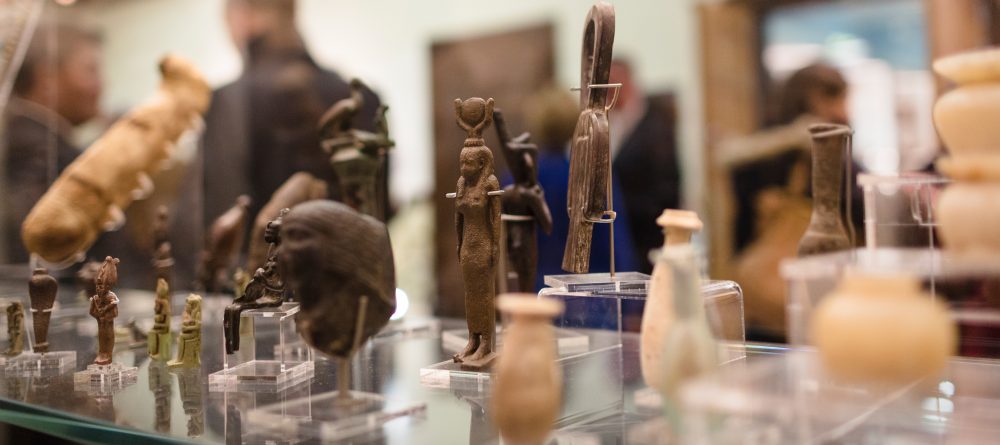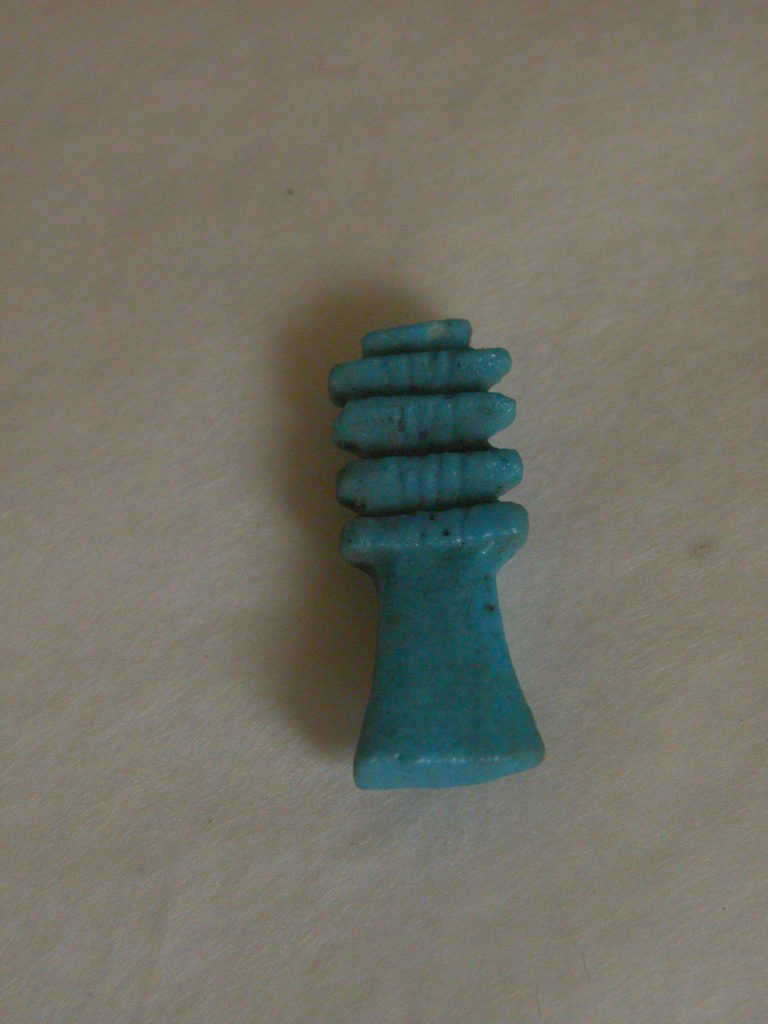
Amulet
Faience amulet in the shape of a djed pillar; the Egyptian symbol of stability. Hole for cord.
Reference: E149
Can be found: Ancient Egypt
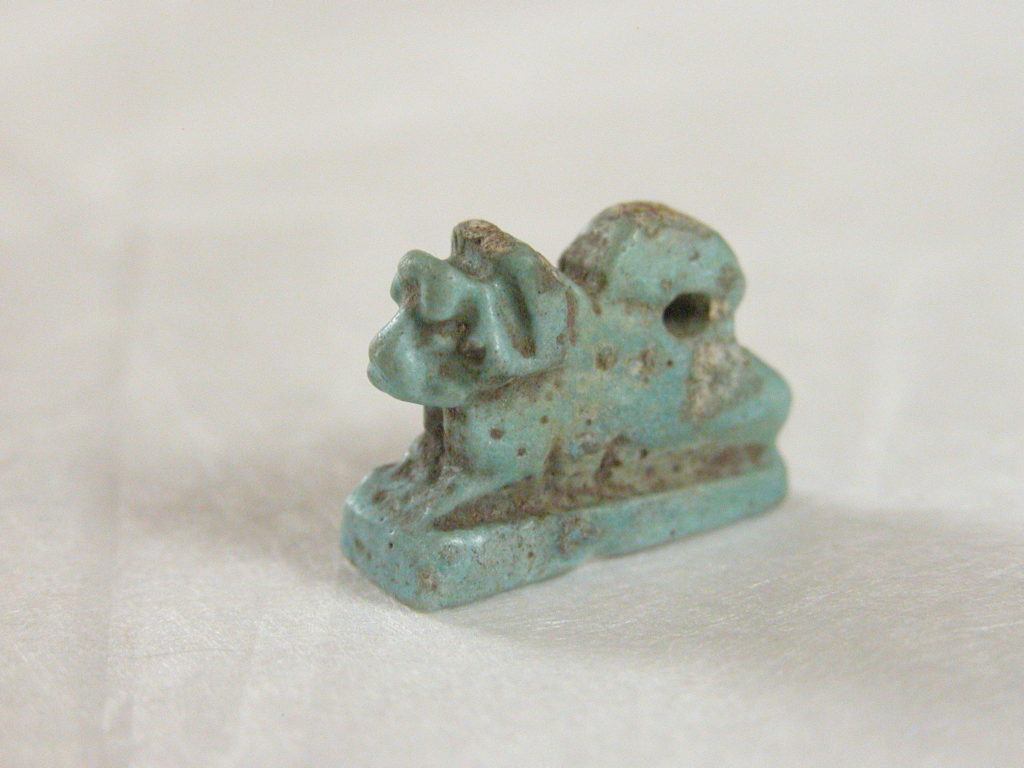
Amulet
A green faience amulet depicting a Ram, an animal significant to more than one deity in Ancient Egypt. It possibly represents either Amun-Re, king of the Gods, or Khnum the potter.
Reference: CANCM: 6016
Can be found: Ancient Egypt

Amulet
Faience amulet in the shape of a lion. Hole for cord should be on the back but has been broken off.
Reference: E204
Can be found: Ancient Egypt


Amulet
Faience amulet in the shape of a ram-headed sphinx. Hole for cord above back.
Reference: E84
Can be found: Ancient Egypt


Amulet
Faience amulet in the shape of a standing goddess. Hole for cord above head.
Reference: E58
Can be found: Ancient Egypt




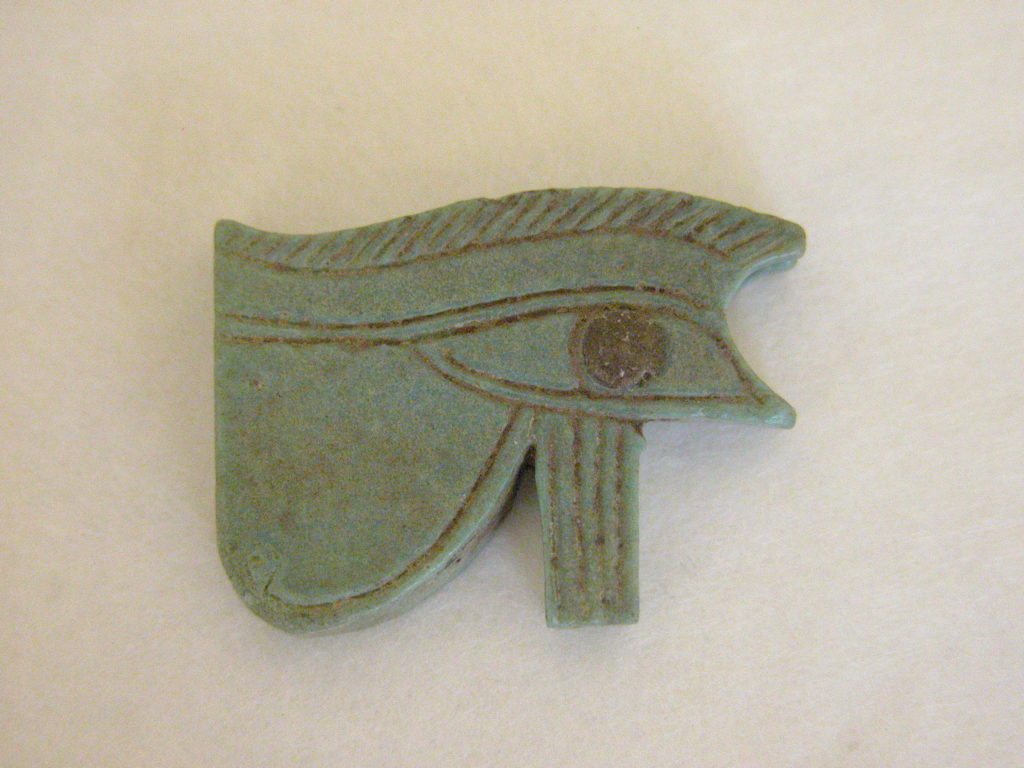

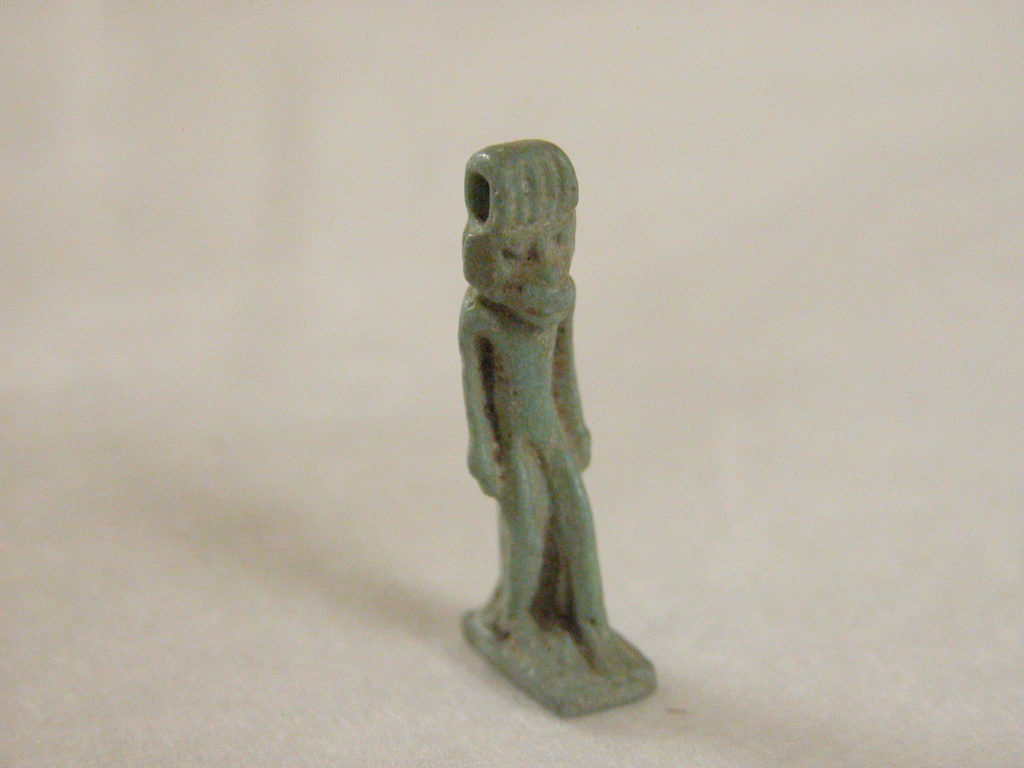

Amulet
Green bead in the shape of a dog-headed ape/standing baboon.
Reference: E68
Can be found: Ancient Egypt
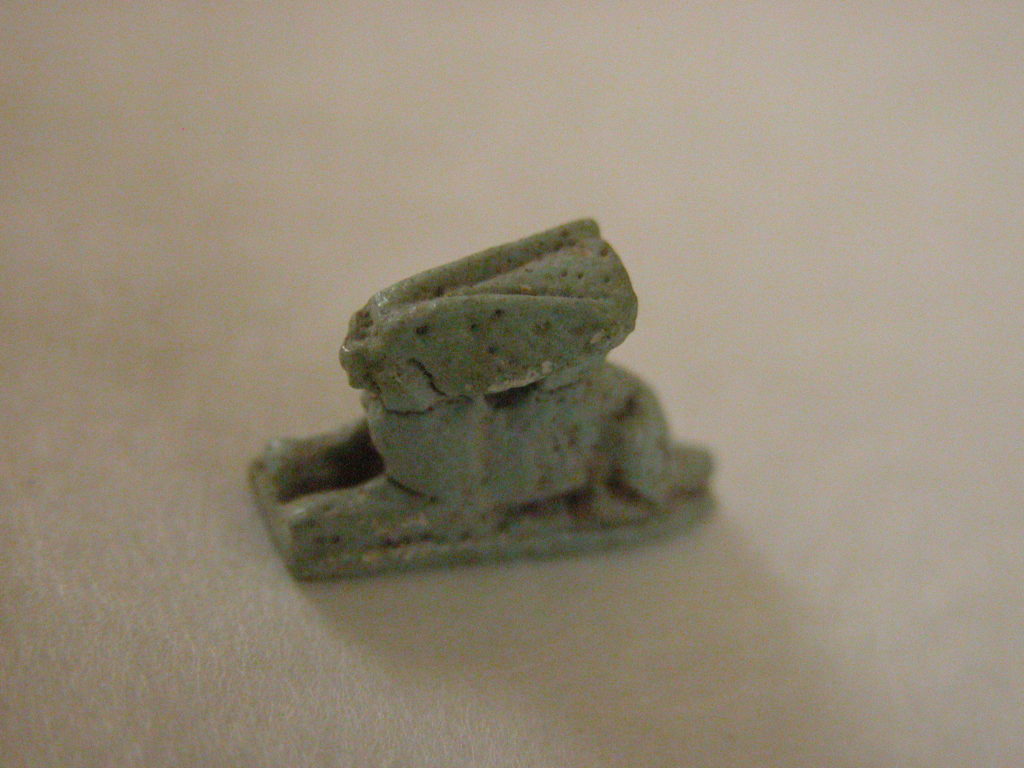

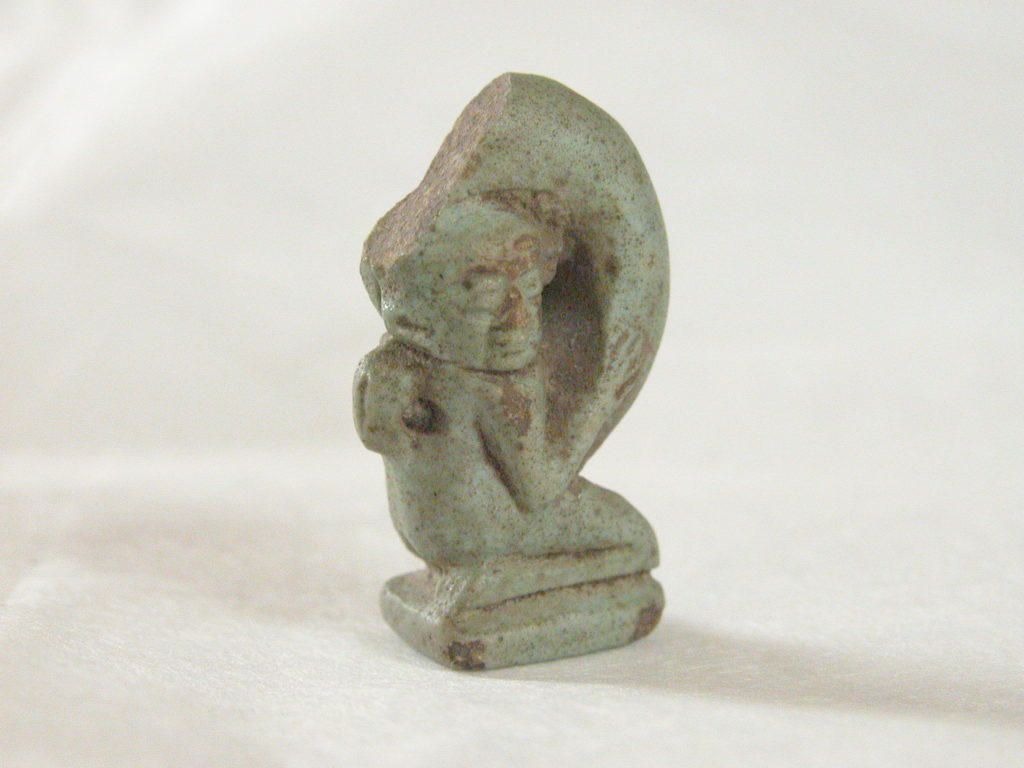



Amulet
Anubis amulet made of stone. First two fingers from mummy’s stone placed on left side of pelvis inside the body to ward off evil.
Reference: CANCM: 2014
Can be found: Ancient Egypt
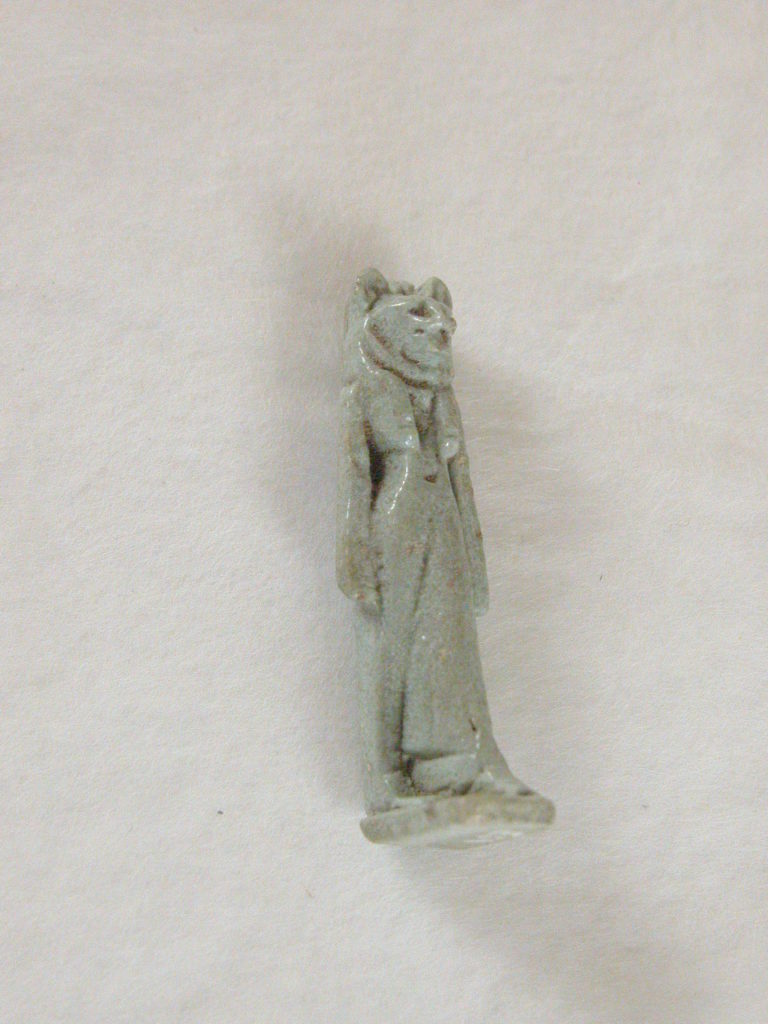

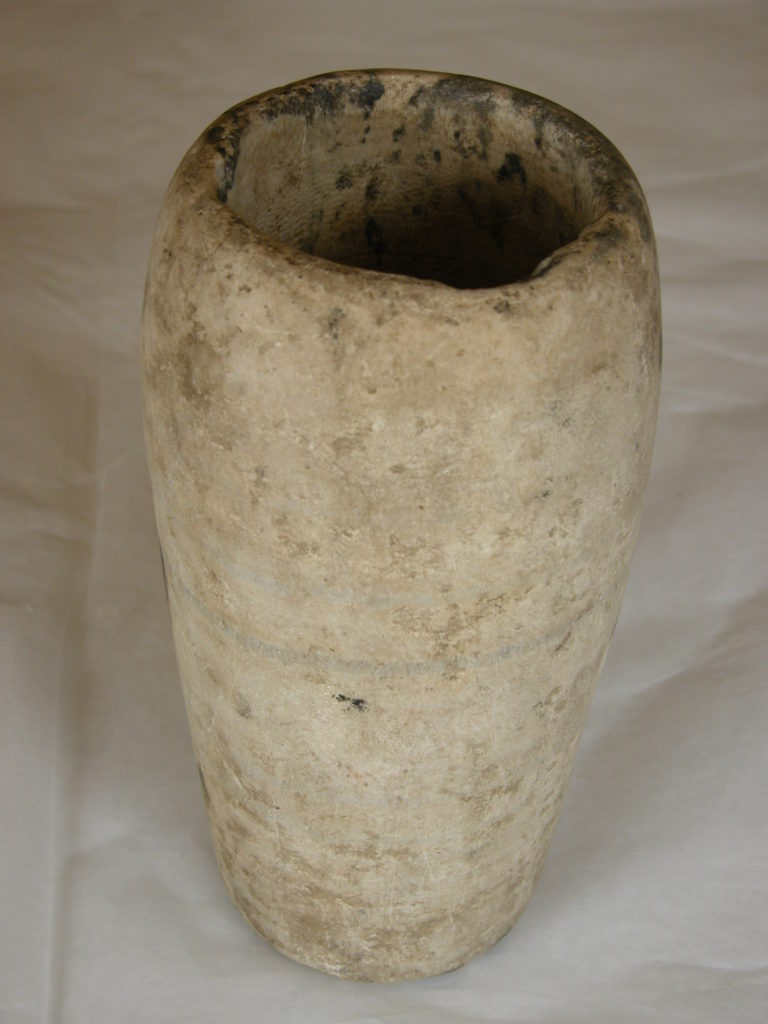

Canopic Jar
Marble canopic jar; human headed ape, wolf, owl.
During mummification, a dead person’s organs were embalmed separately from the body, and from about 2,000 BC were stored in stone or pottery containers called canopic jars. The organs in the jars were guarded by four gods known as the Sons of Horus who appear on the lids.
Reference: CANCM: 4276
Can be found: Ancient Egypt


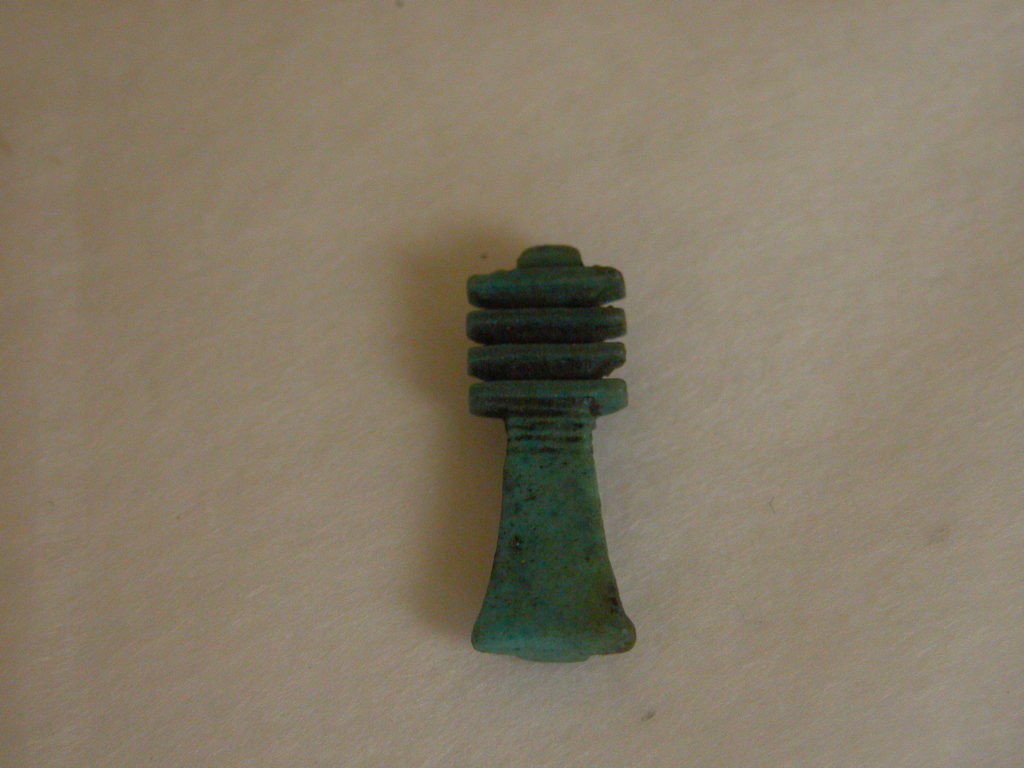

Djed Pillar
Emblem of stability (connected with Osiris) with green glaze/faience.
Reference: CANCM: 2123
Can be found: Ancient Egypt


Faience Scarab
Small green glazed scarab with seal/faience scarab, possibly fake.
Reference: CANCM: 2020
Can be found: Ancient EgyptCollection of scarabs


Figure
Shabti worker figurine. Bluish colour Shabtin figure/ faience worker Shabti.
Reference: CANCM: 2033
Can be found: Ancient Egypt


Furniture Fitting
Emblem of stability. Assonan/Djed emblem wooden furniture.
Reference: CANCM: 2115
Can be found: Ancient Egypt
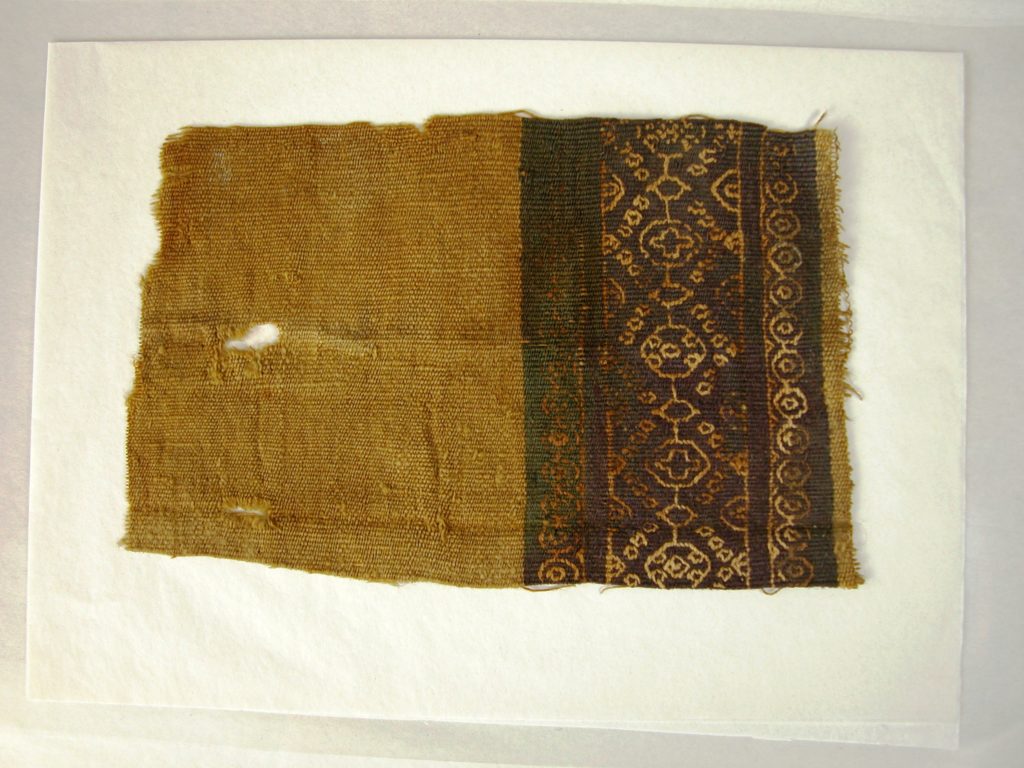

Linen Cloth
Specimen of linen cloth with wide purple border with pattern/Coptic textile.
Reference: CANCM: 5161
Can be found: Ancient Egypt
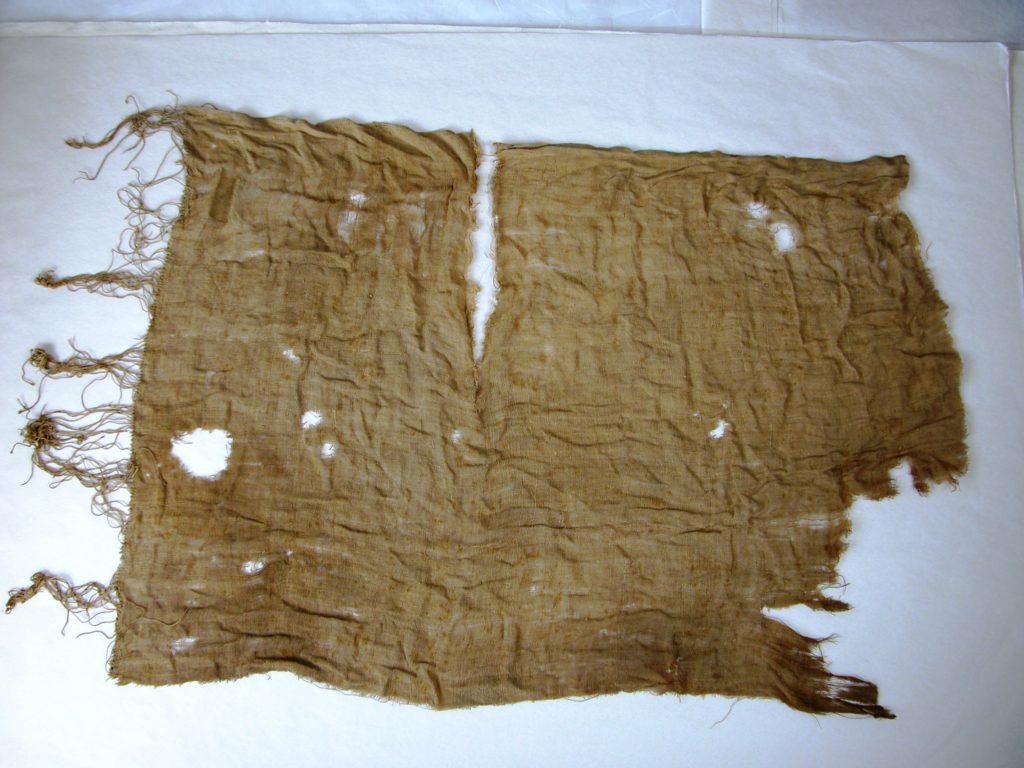

Linen Cloth
Short length of linen cloth with edge of fringe/ mummy cloth.
Reference: CANCM: 5158
Can be found: Ancient Egypt
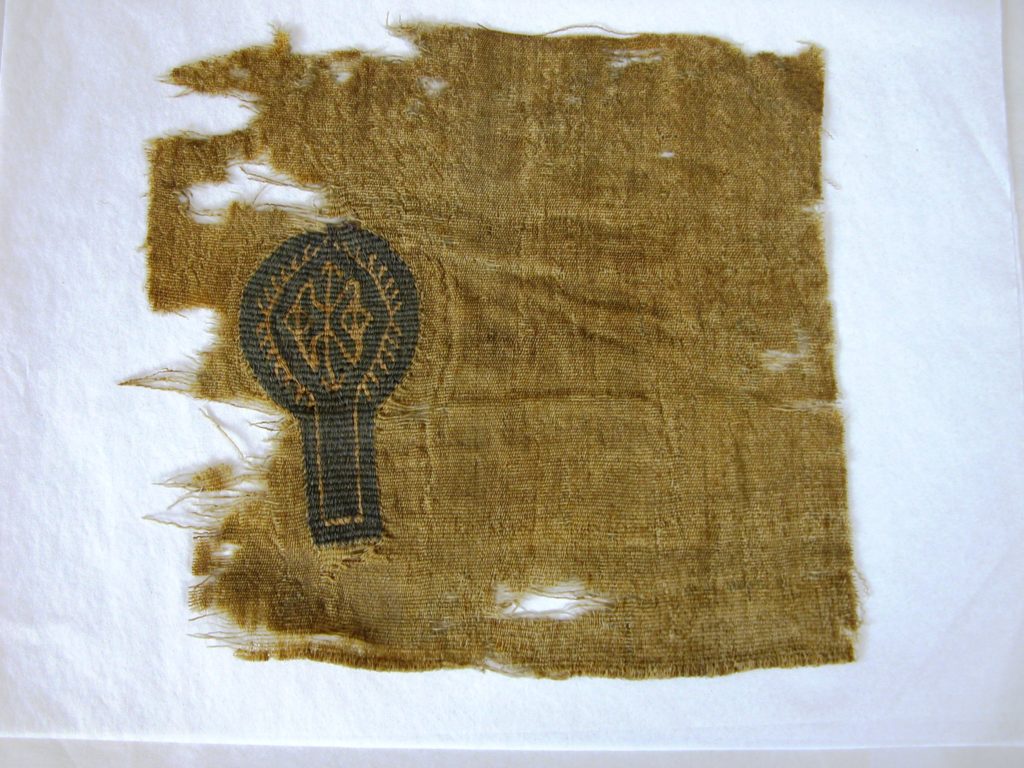

Linen Cloth
Fragment of torn linen cloth with decanter shaped pattern, Coptic textile.
Reference: CANCM: 5163
Can be found: Ancient Egypt
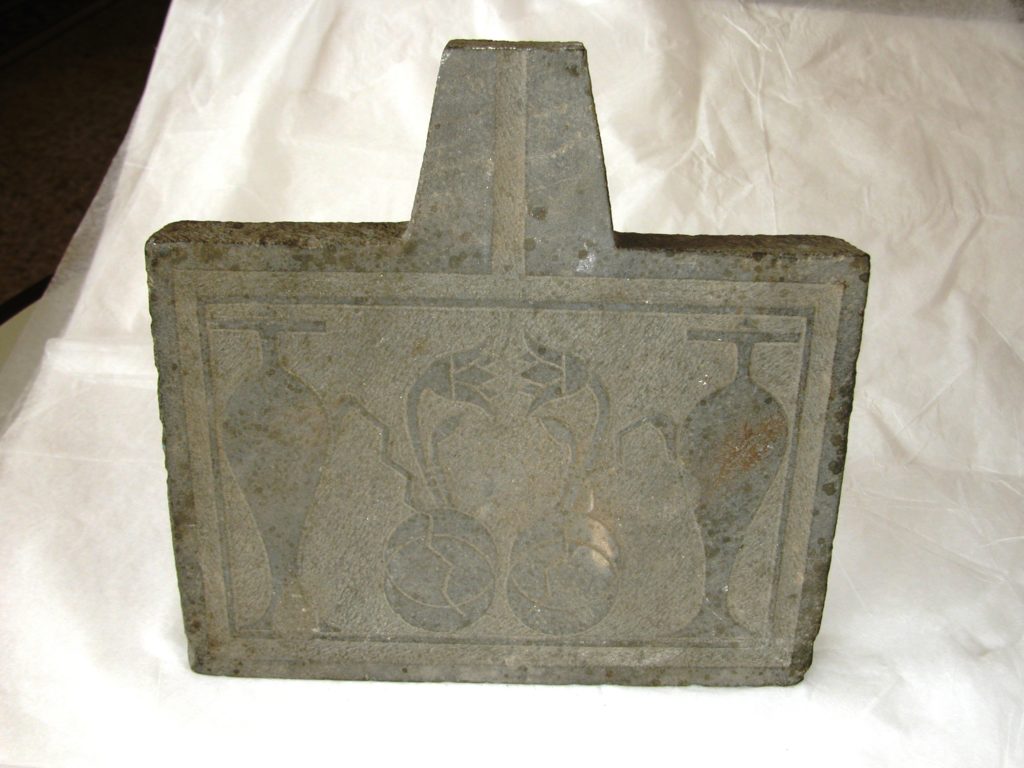

Offering Table
Small libation altar.
It shows two libation vessels pouring an offering to the gods over two seeds which are beginning to bloom.
Reference: CANCM:nn
Can be found: Ancient Egypt
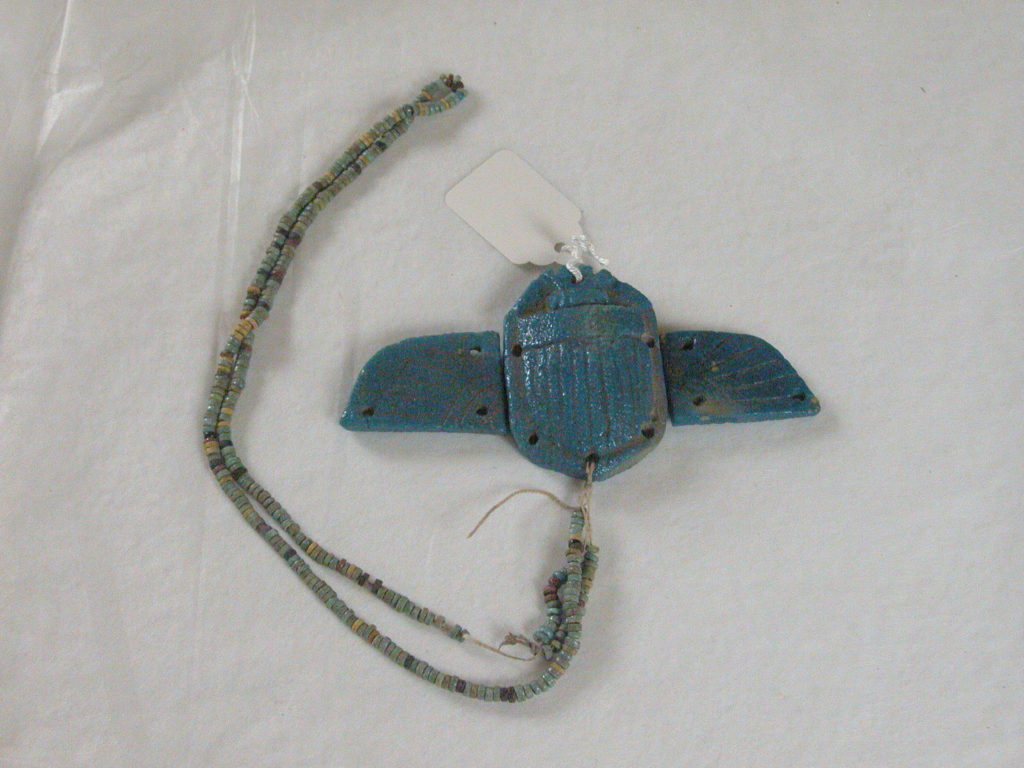

Scarab
Flat blue faience scarab and wings and string of plain green beads.
Reference: E315
Can be found: Ancient EgyptCollection of scarabs
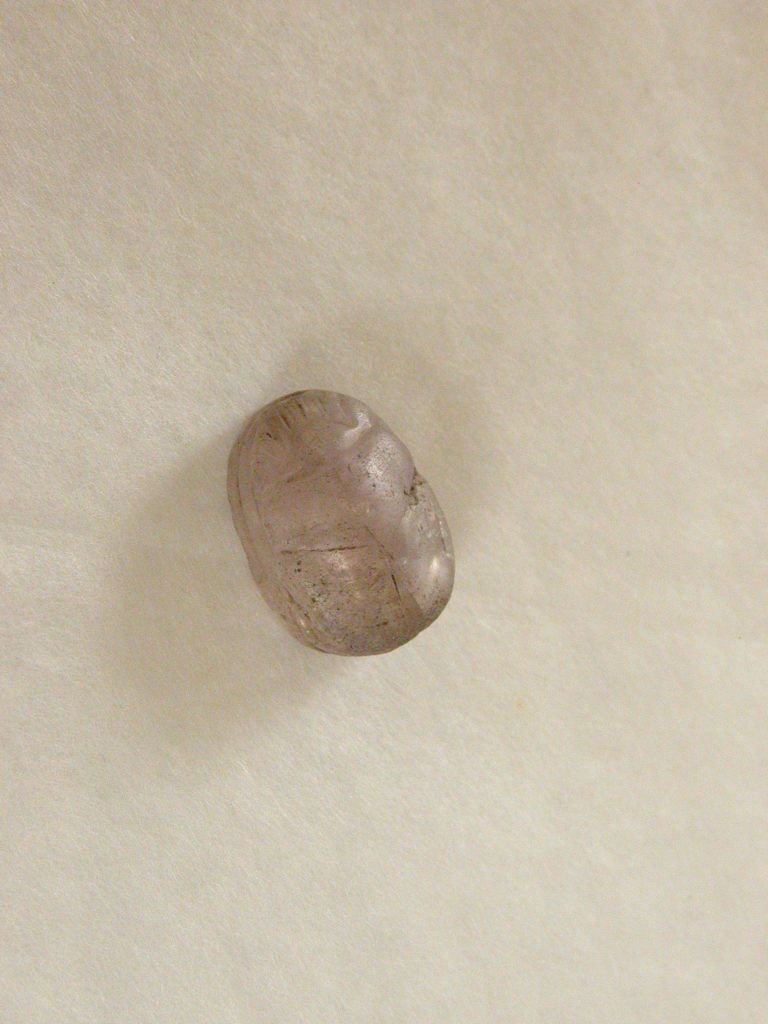

Scarab
Semi precious stone: amethyst - either a fake or middle intermediate period. Hole for cord.
Reference: E98
Can be found: Ancient EgyptCollection of scarabs
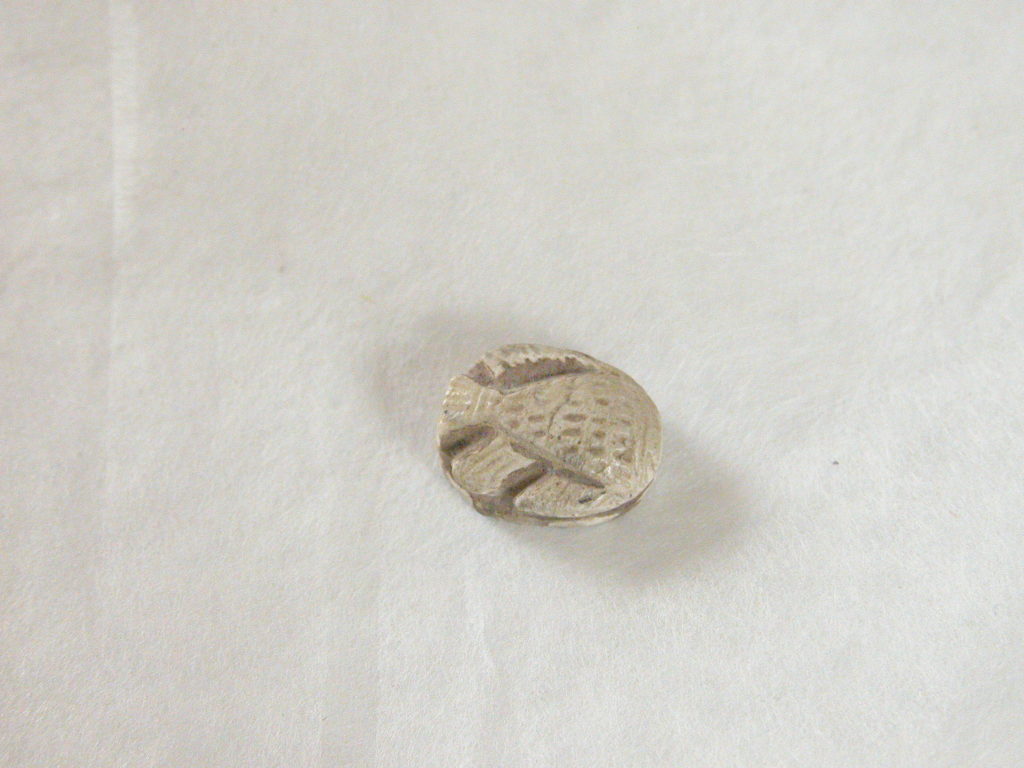

Scaraboid
Stone scaraboid in the shape of fish with Amun Re on base. Hole for cord.
Reference: E141
Can be found: Ancient Egypt
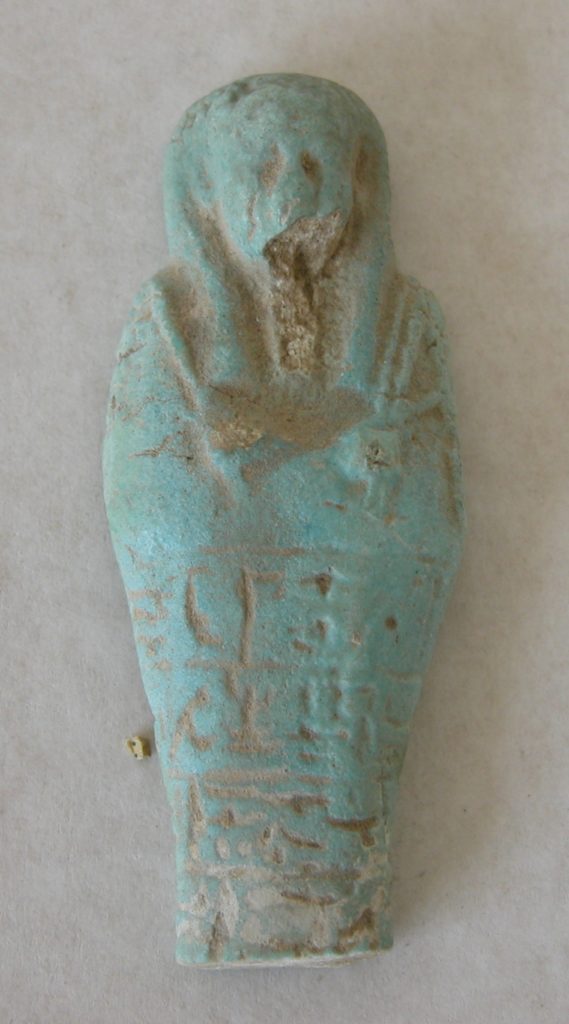





















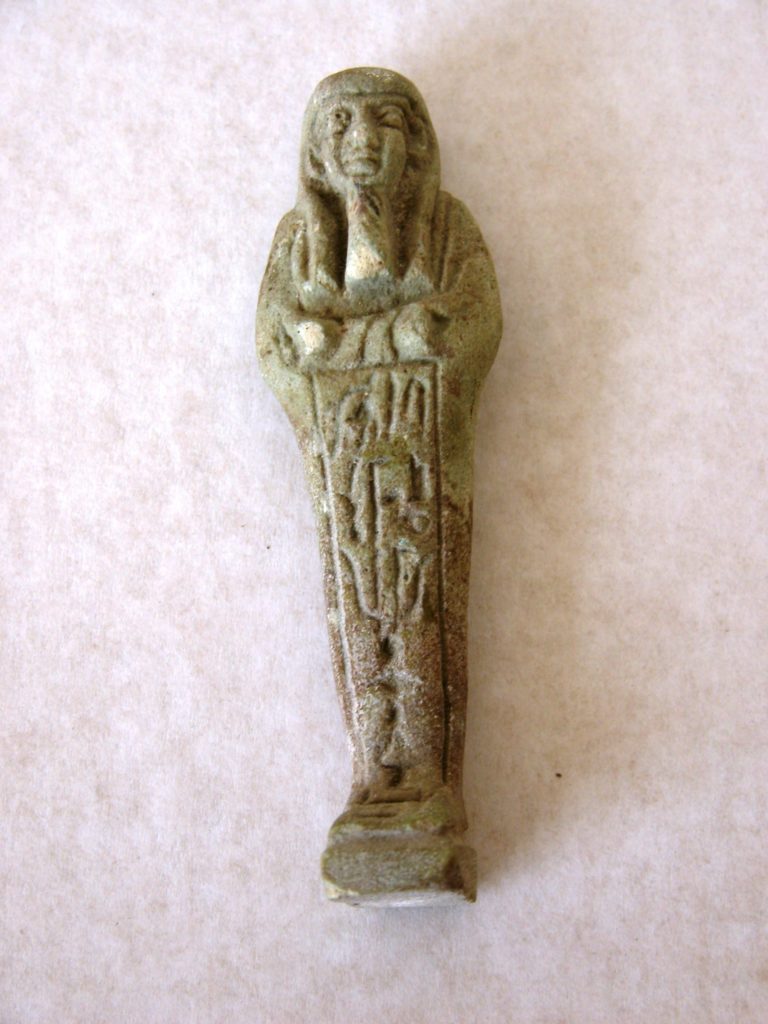

Shabti Figure
Dark green glazed Shabtin figure/faience worker Shabti.
Reference: CANCM: 2038
Can be found: Ancient Egypt
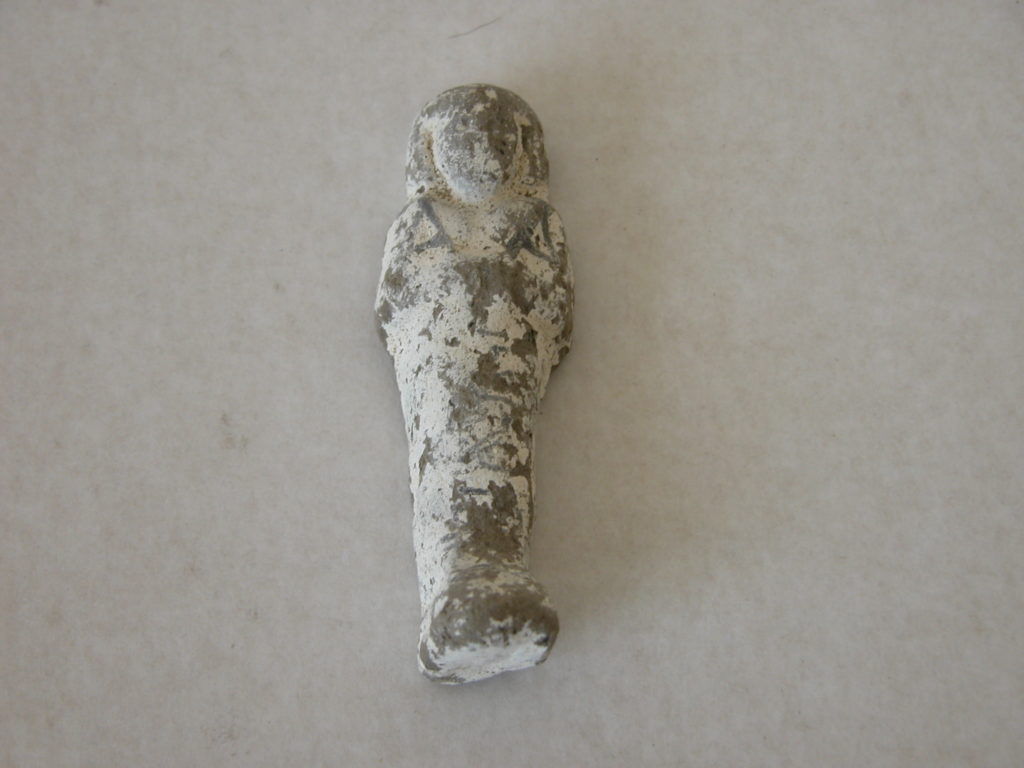

















Shabti figurine
Shabtis were included in Egyptian burials to work for the tomb owner in the afterlife. They were believed by the Ancient Egyptians to spring to life and do all the hard work for the dead in their heaven, the Kingdom of Osiris. This particular Shabti has been finished with green faience.
Reference: CANCM:4204 / E27
Can be found: Ancient Egypt








Stone Scarab
Reference: CANCM: 539
Can be found: Ancient Egypt








Towelling Cloth
Small specimen of bath towelling cloth/mummy cloth
Hundreds of metres of linen were used to wrap a mummy. It didn’t just come in bandage-like strips, but shrouds, large sheets that covered the body like a cape. Bandages were wrapped very tight to maintain the mummies distinctive shape, and brushed with a sticky resin to stick them together.
Reference: CANCM: 5159
Can be found: Ancient Egypt

